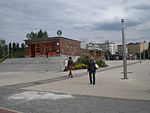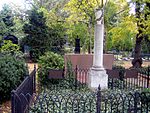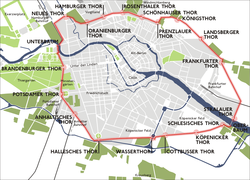The Natural History Museum (German: Museum für Naturkunde) is a natural history museum located in Berlin, Germany. It exhibits a vast range of specimens from various segments of natural history and in such domain it is one of three major museums in Germany alongside Naturmuseum Senckenberg in Frankfurt and Museum Koenig in Bonn.
The museum houses more than 30 million zoological, paleontological, and mineralogical specimens, including more than ten thousand type specimens. It is famous for two exhibits: the largest mounted dinosaur in the world (a Giraffatitan skeleton), and a well-preserved specimen of the earliest known bird, Archaeopteryx. The museum's mineral collections date back to the Prussian Academy of Sciences of 1700. Important historic zoological specimens include those recovered by the German deep-sea Valdiva expedition (1898–99), the German Southpolar Expedition (1901–03), and the German Sunda Expedition (1929–31). Expeditions to fossil beds in Tendaguru in former Deutsch Ostafrika (today Tanzania) unearthed rich paleontological treasures. The collections are so extensive that less than 1 in 5000 specimens is exhibited, and they attract researchers from around the world. Additional exhibits include a mineral collection representing 75% of the minerals in the world, a large meteor collection, the largest piece of amber in the world; exhibits of the now-extinct quagga, huia, and tasmanian tiger, and "Bobby" the gorilla, a Berlin Zoo celebrity from the 1920s and 1930s.
In November 2018 the German government and the city of Berlin decided to expand and improve the building for more than €600 million.









